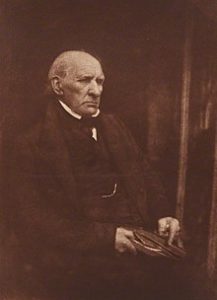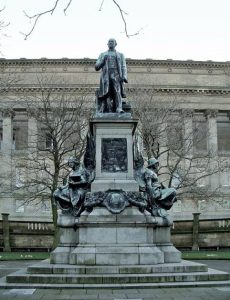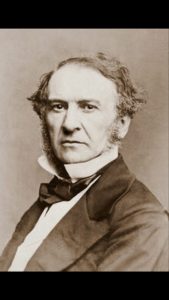The Gladstone Family

William Ewart Gladstone, one of Liverpool’s greatest sons, was born in Rodney Street in 1809, the son of John Gladstone, who was one of the largest British slave owners on his estates in Jamaica and Demerara. In 1823, the greatest slave rebellion in Demeraran history took place on a Gladstone plantation. The insurrection was put down with great brutality, with many of the slaves being mutilated and others executed for having the temerity to rebel against their enslavement. When slavery was finally abolished his family received the largest compensation payment from the British government, over £100,000 for the more than 2,000 enslaved people they had to free. Although not a claimant himself, William was closely involved with the claims of his father and other relatives. Hand written records highlight William’s central role in calculating his father’s human property and working out the compensation that was due to the family. Although William is remembered for championing Irish Home Rule and Parliamentary reform, as a young MP his earliest speeches in parliament were in defence of slavery and accusations of mistreatment of the enslaved on his family plantations. During the American Civil War, he also expressed support for the Confederacy. The statue of William (pictured below) stands in St John’s Garden. He is still the only person to have held the office of Prime Minister for four terms.


Court Hey Park, home of the National Wildflower Centre, was the home of Robertson Gladstone, son of John Gladstone and brother of the future Prime Minister, William Ewart Gladstone. Robertson received over £21,000 for the 393 slaves he had to free on his plantation in Demerara. He built the hall (pictured below) in 1836, just after he would have received his compensation. The estate stayed in the Gladstone family until 1919 and the house was demolished in 1956. Robertson also erected a fine town house in Abercromby Square. The twenty million pounds of compensation given to slave owners on the abolition of slavery in 1834 was the largest government bailout in British history up until the banking crash of 2008. The loan taken out by the treasury to pay the Gladstones and others was only finally paid off in 2015.
Many of Liverpool’s finest public green spaces and buildings have a connection to merchants who traded in enslaved Africans and slave-produced goods.


John Gladstone was a founding member of the Royal Institution, he owned three shares. Family members, Robert Gladstone, David Gladstone and Murray Gladstones also purchased one share each.